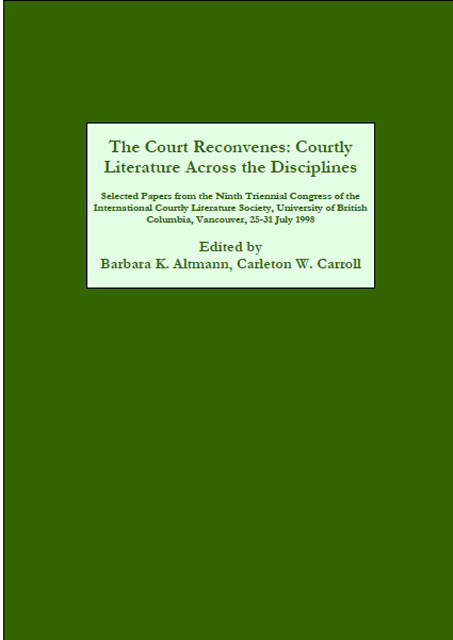 The Court Reconvenes
The Court Reconvenes Incest, Identity and Uncourtly Conduct in La Manekine
Published online by Cambridge University Press: 31 March 2023
Summary
Among courtly romances, Philippe de Remy's Roman de la Manekine is a rare example of a male-authored narrative of adventure with a female protagonist. Nevertheless, the quest it plots of the protagonist's initiation and integration into society is typical of the received romance tradition. Medieval romance, says Bloch,
serves as a virtual guidebook, a manual of instruction for the integration of the hidden self within the public sphere. The romance hero is precisely he who, having lived through a series of internal crises, either achieves – like Erec, Yvain, Cligès – a balance between personal desire and social necessity, or who – like Tristan – is excluded from society altogether. (226)
La Manekine follows the fortunes of its protagonist, Joïe, from her birth as the Princess of Hungary, through innumerable vicissitudes (she is threatened with an incestuous marriage, twice cast adrift on the ocean, twice exiled in foreign lands and falsely accused of monstrous birth) to her eventual restoration as the rightful queen of Hungary, Armenia and Scotland. Some critics have read this courtly romance as an exemplum, a didactic work for the education and edification of the public; and indeed Joïe is represented from beginning to end as a young woman of great piety. Others see it as a plea for exogamous marriage, whereby a man is bound to take a wife outside his own group. My own inclination is to view La Manekine as a multi-layered romance that can be read at many levels.
Beyond the story of Joïe's initiation and final successful integration into society, however, the romance engages with issues of name and identity in ways that are subtly different from those of standard romances with male heroes. It confronts the problems of identity as a social construct, conferred upon individuals by virtue of their birth or rank in society; it shows that external or public perception may be at variance with a character's sense of selfhood, or private identity. In light of such concerns, La Manekine can profitably be read as a courtly romance in which the main character's social identity is subverted by the decidedly uncourtly conduct of some of the key players. Thelma Fenster's article “Beaumanoir's La Manekine: Kin D(r)ead: Incest, Doubling and Death” offers such a reading, based on Freudian psychoanalytical theory.
- Type
- Chapter
- Information
- The Court ReconvenesCourtly Literature across the Disciplines: Selected Papers from the Ninth Triennial Congress of the International Courtly Literature Society, University of British Columbia, Vancouver, 25-31 July 1998, pp. 161 - 168Publisher: Boydell & BrewerPrint publication year: 2002


